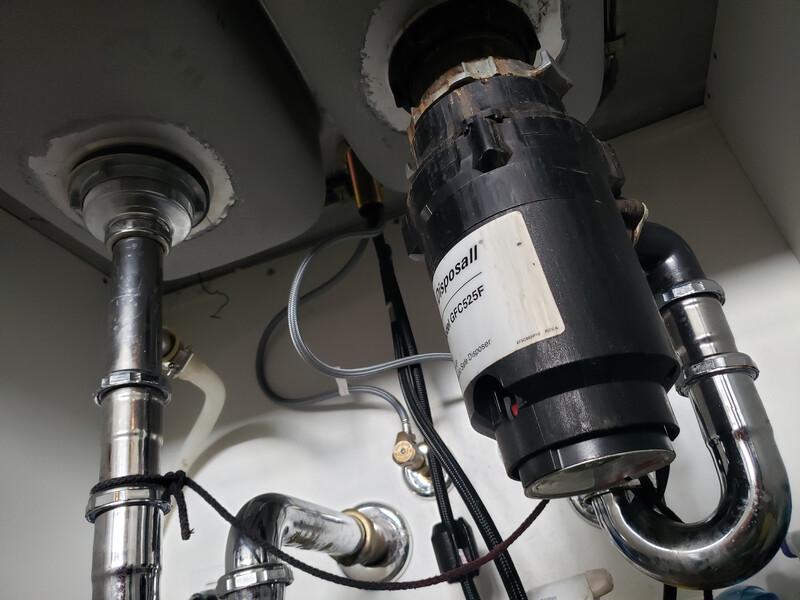Our Comprehensive Guide to Fixing a Leaky Garbage Disposal
Our Comprehensive Guide to Fixing a Leaky Garbage Disposal
Blog Article
Presented here in the next paragraph you can find a lot of good facts with regards to Why Is .

Garbage disposals are necessary cooking area devices that help in dealing with food waste effectively. Nevertheless, a leaking garbage disposal can be a discouraging and messy trouble to deal with. Luckily, lots of leakages can be dealt with conveniently with a few simple actions. In this write-up, we will discuss exactly how to fix a leaking waste disposal unit effectively.
Introduction
Waste disposal unit are installed under cooking area sinks and are developed to shred food waste into smaller pieces, enabling it to pass through the plumbing system conveniently. While these gadgets are normally trusted, leakages can occur over time due to damage, loosened connections, or damage to the device.
Step-by-Step Guide to Repairing a Dripping Waste Disposal Unit
Switch off the Power
Prior to attempting any kind of repair services, guarantee that the power to the garbage disposal device is shut off to prevent the threat of electrical shock.
Find the Leak
Recognize the precise area of the leak and determine the reason
Tighten Links
Utilize a wrench to tighten any kind of loose links between the disposal device and the plumbing system.
Change Seals or Gaskets
If the leak results from worn seals or gaskets, remove the old parts and replace them with brand-new ones.
Patching Cracks or Openings
For cracks or holes in the disposal device, use epoxy or an ideal patching product to seal the damaged location.
Identifying the Resource of the Leak
Before attempting to deal with a leaking garbage disposal, it is important to identify the source of the leakage. This can generally be done via visual assessment or by performing easy examinations.
Visual Assessment
Evaluate the garbage disposal system meticulously for any indications of water leak. Pay close attention to areas around seals, gaskets, and link factors.
Evaluating for Leakages
One means to test for leaks is by running water with the disposal device and looking for any visible indications of leakage.
Common Root Causes Of Leakages in Waste Disposals
Worn Seals and Gaskets
Seals and gaskets play an essential function in stopping water from dripping out of the waste disposal unit. Over time, these components can wear away, leading to leaks around the disposal unit.
Loose Connections
The connections between the garbage disposal and the plumbing system can end up being loose in time, creating water to leak out during procedure.
Splits or Openings in the Disposal Device
Physical damages to the waste disposal unit, such as fractures or openings in the housing, can also result in leaks.
Tools and Materials Needed for Fixing a Dripping Garbage Disposal
Before beginning the fixing procedure, collect the needed tools and products, including a screwdriver, flexible wrench, plumbing professional's putty, substitute seals or gaskets, and epoxy or patching product for repairing fractures or holes.
Examining the Garbage Disposal After Fixing
Once the fixing is full, test the garbage disposal by running water through it to ensure that the leakage has actually been settled.
Preventive Upkeep Tips to Prevent Future Leaks
To prevent future leaks, it is necessary to carry out regular upkeep on your waste disposal unit. This includes keeping it tidy, staying clear of putting non-food items or tough items down the disposal, and regularly checking for leakages or other issues.
Verdict
To conclude, repairing a leaking waste disposal unit is a fairly straightforward procedure that can be completed with standard devices and materials. By adhering to the steps laid out in this post and practicing preventative maintenance, you can maintain your garbage disposal in good working problem and prevent costly fixings in the future.
HERE’S HOW TO FIX YOUR GARBAGE DISPOSAL
WHAT TO DO IF SOMETHING IS STUCK IN YOUR GARBAGE DISPOSAL
If the impeller won’t turn, there’s probably something stuck in the disposal. It could be a steak bone or peach pit, although plumbers report pulling all sorts of inappropriate objects out of disposals, such as bottle caps or aluminum foil. Make sure power to the disposal is off, and look inside to see if you can see the source of the jam.
Never stick your fingers in a disposal. Pull out anything you see with tongs or pliers.
If the disposal still won’t work, it may be time to call a plumber or consider buying a new disposal. GEM Plumbing & Heating is here for all of your garbage disposal needs.
WHAT TO DO IF YOUR GARBAGE DISPOSAL DRAIN IS CLOGGED
Take everything out from underneath your sink and put a bucket or other container under your disposal to catch any water that drains out. Disconnect your disposal from the power supply. If it’s plugged into a wall outlet, unplug it. If it’s hardwired into an electrical box, go to the electrical panel and turn off the breaker for the disposal. Pour ¼ cup of baking soda into the drain, followed by ½ cup of white vinegar. Give the solution a few minutes to fizz and do its work. Look into the disposal with a flashlight to see if you can see an object that might be causing the clog. If you see it, remove it using tongs or pliers. MORE TIPS ON DEALING WITH A CLOGGED GARBAGE DISPOSAL
Never use drain cleaner in a garbage disposal. It can damage the plastic parts inside the disposal. You can also be splashed with the caustic liquid while working to clear the clog. Beware! Never stick your fingers into a garbage disposal. Trust us — not a good idea. In many instances, your dishwasher drains through your garbage disposal. This allows the disposal to grind any large food particles that may be drained out of your dishwasher. There are some jurisdictions, however, where the plumbing code prohibits such a connection. WHAT TO DO WHEN YOUR DISHWASHER DRAINS THROUGH THE DISPOSAL
Run some water in the sink so your plunger has at least a ½-inch of water to create a seal and plunge vigorously up and down several times. You may need to repeat this several times. Run hot water down the drain to clear any residue that remains.

As a keen person who reads about Why Is , I thought sharing that piece was worth the trouble. Please set aside a second to distribute this write-up if you appreciated it. Many thanks for going through it.
Call Today Report this page